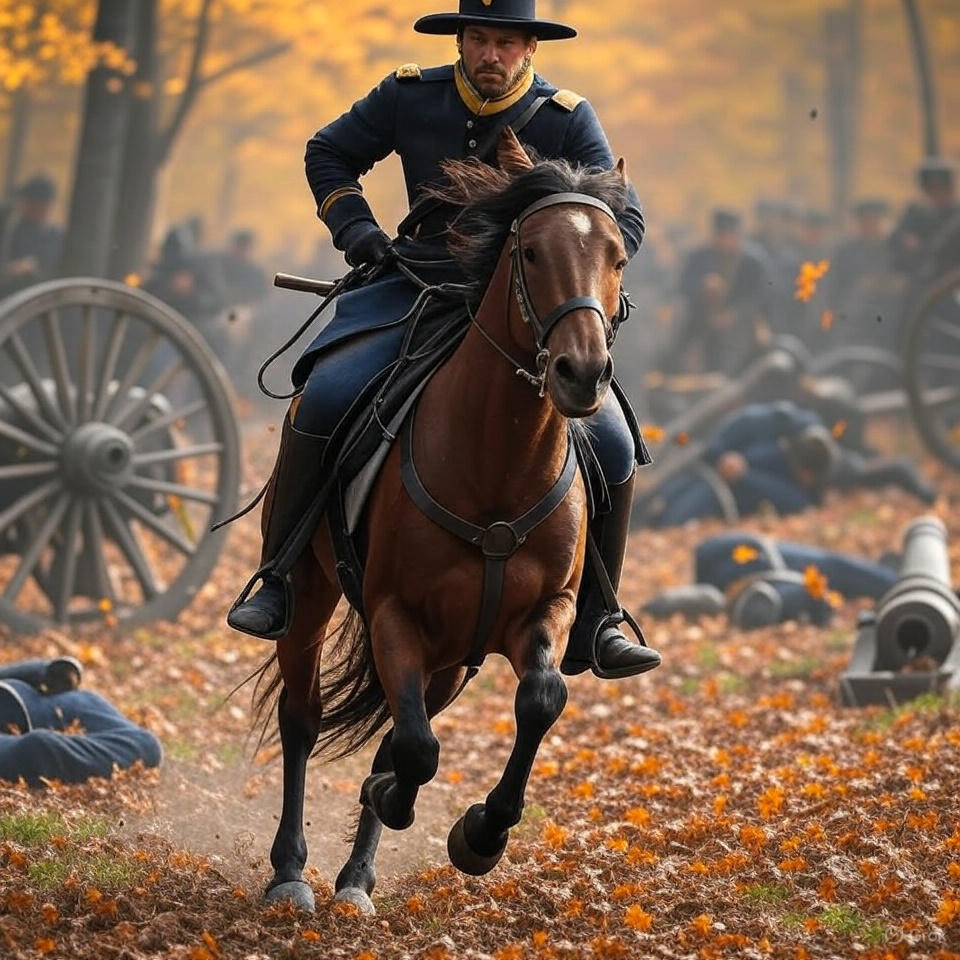On October 4, 1636, amid the swirling mists of autumn in northern Germany, a clash of arms unfolded that would echo through the annals of European history. The Battle of Wittstock pitted the disciplined forces of Sweden against a formidable coalition of Imperial and Saxon troops in the Thirty Years’ War, one of the most protracted and devastating conflicts in the continent’s past. This engagement, fought on the rugged hills and forested fringes near the town of Wittstock, represented a masterstroke of military ingenuity. Swedish commanders Johan Banér and Alexander Leslie orchestrated a audacious flanking maneuver that turned the tide against numerically superior foes, securing a victory that reinvigorated the Protestant cause and prolonged the war’s brutal course. Far from a mere skirmish, Wittstock embodied the era’s chaos: religious fervor intertwined with imperial ambitions, multinational armies clashing over ideology and territory, and innovative tactics born of desperation. As we delve into this pivotal moment, we’ll uncover the layers of strategy, sacrifice, and shrewd leadership that defined it, drawing parallels to how such historical resilience can empower modern individuals to navigate their own challenges with calculated boldness.
To appreciate Wittstock’s drama, one must first grasp the Thirty Years’ War’s sprawling tapestry. Ignited in 1618 by the Defenestration of Prague—where Protestant nobles hurled Catholic officials from a window in a symbolic act of defiance—the conflict began as a Bohemian revolt against Habsburg rule but metastasized into a pan-European inferno. The Holy Roman Empire, dominated by Catholic Habsburgs, sought to crush Protestantism through the Edict of Restitution in 1629, which demanded the return of church lands seized during the Reformation. This sparked widespread alarm among Protestant states, drawing in foreign powers. Sweden, under the ambitious King Gustavus Adolphus, entered the fray in 1630, motivated by a mix of religious solidarity, territorial gains in the Baltic, and subsidies from Protestant allies like France. Gustavus, a military innovator, reformed Swedish armies with mobile artillery, combined arms tactics, and linear formations that emphasized firepower over medieval charges. His landings in Pomerania marked the Swedish phase of the war, where victories like Breitenfeld in 1631 shattered Imperial invincibility and established Sweden as Europe’s preeminent Protestant champion.
Yet, fortune proved fickle. Gustavus’s death at the Battle of Lützen in 1632 left a leadership vacuum, and subsequent setbacks culminated in the disastrous Battle of Nördlingen in 1634, where a combined Imperial-Spanish force decimated the Swedes, killing or capturing thousands. This defeat prompted France’s direct intervention under Cardinal Richelieu, shifting the war’s dynamics toward a balance of power struggle. By 1636, Sweden teetered on the brink: their armies depleted, finances strained, and northern Germany overrun by Imperial incursions. Elector George William of Brandenburg, a wavering neutral, saw his lands ravaged, while Saxon forces under Elector John George I allied uneasily with the Imperials. The stage was set for confrontation as Swedish remnants, bolstered by mercenaries and allied contingents, sought to reclaim initiative.
Enter the architects of Wittstock: Johan Banér, a fiery Swedish noble with a reputation for aggressive maneuvers, and Alexander Leslie, a shrewd Scottish general whose experience in the Thirty Years’ War lent tactical precision. Banér, born into aristocracy, had risen through the ranks under Gustavus, commanding with a blend of bravado and brutality—accounts describe him as a heavy drinker whose personal demons fueled his battlefield ferocity. Leslie, conversely, embodied disciplined professionalism; a veteran of Swedish service since the 1620s, he led the Army of the Weser, incorporating hardy Scottish and English regiments known for their pike-and-musket formations. Their combined force numbered around 17,000 infantry, cavalry, and artillerymen, supported by 60 guns—a formidable but outnumbered host facing 18,000 Imperial-Saxons with 32 cannons under Count Melchior von Hatzfeld and John George I.
The prelude to battle was a saga of strategic deception. Imperial forces, believing the Swedes weakened post-Nördlingen, advanced to screen Saxon operations and overran Brandenburg. Banér, however, executed a daring crossing of the Elbe River, a logistical feat involving pontoon bridges and night marches through hostile territory. By early October, the Swedes positioned themselves south of Wittstock, confronting the enemy entrenched on the Scharfenberg hills. This elevated, sandy terrain—pockmarked by forests, marshes, and open fields—favored defenders. The Imperials fortified their lines with ditches, wagon barricades (a la “wagenburg” tactics from Hussite wars), and artillery placements overlooking potential approach routes. Autumn fog and uneven ground added unpredictability, turning the landscape into a natural ally for ambushes.
As dawn broke on October 4, the Imperials anticipated a straightforward assault across exposed fields, where their guns could wreak havoc. Banér and Leslie, however, devised a multifaceted plan exploiting the terrain’s blind spots. The main body feinted a frontal probe to pin the enemy, while a detachment of about 4,000-5,000 men under Lieutenant-General James King and Major-General Torsten Stålhandske embarked on a grueling flank march around the Imperial right. This circuitous route traversed dense woods and boggy mires, delaying their arrival and exposing Banér’s center to punishing fire. Initial clashes saw Swedish advances falter; Banér’s troops, bogged in marshes, suffered heavy losses as Imperial volleys and Saxon infantry held firm.
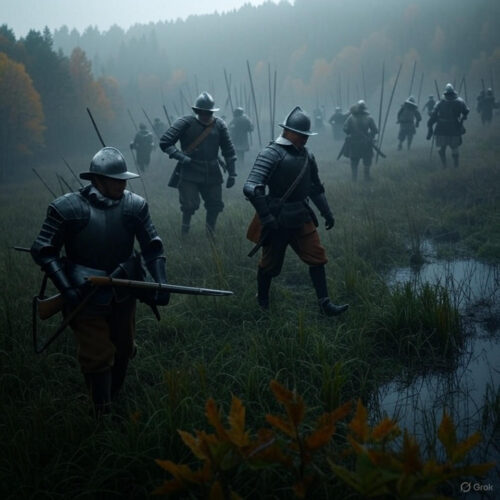
The battle’s hinge moment arrived mid-day. With Banér’s line buckling—Scottish regiments under Leslie mauled in relief efforts, their formations shredded by grapeshot and close-quarters pike duels—King’s cavalry finally emerged from the woods. This unexpected thunder on the Imperial flank sowed panic; Hatzfeld’s reserves, including Major-General Vitzthum’s hesitant cavalry, failed to counter effectively. Leslie’s son-in-law, Major-General John Ruthven, led a decisive charge that captured Imperial artillery, turning the guns against their former owners. The Swedes’ superior firepower and coordinated infantry-cavalry assaults overwhelmed the defenders. As dusk fell, the Imperial-Saxons routed in disorder, abandoning positions and fleeing toward the Elbe, their cohesion shattered by the double envelopment. Casualties underscored the pyrrhic nature: Swedes lost 3,500 (dead and wounded), a grim toll reflecting the frontal sacrifices, while Imperials suffered 5,000 killed, wounded, or captured, plus all their artillery.
Primary accounts, preserved in Swedish archives, reveal the human undercurrents. Banér’s dispatch to Chancellor Axel Oxenstierna lauded the victory but glossed over disputes; Leslie’s private letters expressed dismay at the “horrid” losses and critiqued Banér’s recklessness, hinting at pre-battle tensions over the risky maneuver. James King’s report corroborated the chaos, describing the flank march’s perils—soldiers waist-deep in mud, arrows and musket balls whizzing through canopy. These documents, translated and analyzed in modern scholarship, paint commanders not as infallible heroes but as pragmatists navigating alliance frictions and the war’s attritional grind.
The immediate aftermath was a Swedish resurgence. Wittstock expelled Imperials from Brandenburg, restoring Elector George William’s neutrality and opening northern Germany to Protestant operations. Banér’s army, though battered, pursued remnants, plundering to sustain supplies in a war where foraging was as vital as fighting. This victory dispelled notions of Swedish decline, boosting morale and attracting recruits; it also strained Imperial resources, forcing reallocations that weakened other fronts. Long-term, Wittstock prolonged the conflict, contributing to the 1648 Peace of Westphalia, which redrew Europe’s map by affirming state sovereignty and curbing Habsburg dominance. Sweden emerged a great power, gaining Pomerania and Baltic tolls, while the war’s toll—estimated at 8 million deaths from battle, famine, and disease—scarred the continent, inspiring reflections on war’s futility in later philosophies.
Delving deeper into the war’s prelude illuminates Sweden’s improbable rise. Gustavus Adolphus’s interventions stemmed from Baltic rivalries; his Polish wars honed tactics like the salvo firing of muskets in relays, revolutionizing infantry. Post-Lützen, successors like Axel Oxenstierna managed diplomacy, securing French subsidies that funded mercenaries—often unreliable but essential. The Swedish army at Wittstock exemplified this hybrid: core Swedish levies drilled in linear tactics, augmented by Scottish Covenanters seeking Protestant glory and German auxiliaries lured by pay. Imperial forces, conversely, suffered from divided command; Saxons, Protestant yet allied for survival, provided subpar troops, their morale eroded by religious qualms and logistical woes.
Tactics at Wittstock merit dissection for their ingenuity. The Swedish brigade system—regiments formed in shallow lines for volley fire, supported by mobile light artillery (leather guns for portability)—contrasted Imperial tercio blocks, rigid squares vulnerable to flanks. Banér’s feint drew enemy fire, conserving ammunition while the encircling force, though delayed by terrain, struck decisively. Cavalry charges, not mindless sabre-rattling but timed to exploit infantry breakthroughs, sealed the rout. Anecdotes abound: one Scottish regiment, decimated yet holding, reportedly taunted foes with Gaelic cries amid the smoke; another tale speaks of Banér personally rallying faltering pikemen with saber in hand, his coat bloodied from a minor wound.
The battle’s significance extends beyond military annals. It exemplified how underdogs, through terrain mastery and deception, upend odds—a theme recurring in history from Cannae to Waterloo. In the Thirty Years’ War’s context, Wittstock forestalled Catholic triumph, preserving Protestantism’s foothold and influencing Enlightenment ideas on religious tolerance. Economically, Sweden’s gains funded naval expansions, cementing Baltic hegemony until the Great Northern War.

Shifting to the war’s broader canvas, consider the societal impacts preceding Wittstock. The conflict depopulated regions; Saxony alone lost a third of its people to pillage and plague. Swedish marches, while disciplined by era standards, imposed “contributions”—extortions funding campaigns, breeding resentment. Banér’s pre-Wittstock operations involved scorched-earth retreats, denying resources to pursuers, a harbinger of later total wars. Imperial commander Hatzfeld, a Wallenstein protégé, navigated court intrigues; his defensive posture reflected Ferdinand II’s caution post-Nördlingen, prioritizing preservation over aggression.
Post-victory, Swedish momentum waned by 1637 due to internal strife—Banér’s alcoholism led to erratic commands—and French-Swedish rivalries. Yet Wittstock’s legacy endured in military theory; 18th-century reformers studied its maneuvers, influencing Frederick the Great’s oblique order attacks. Archaeological digs at the site, uncovering mass graves with 125 skeletons, reveal the battle’s grim reality: lead balls, pike heads, and uniform buttons attest to multinational dead, blending Swedish woolens with Saxon iron.
The outcome of Wittstock—triumph through adaptive strategy and unflinching resolve—offers timeless wisdom for personal battles. In an era of uncertainty, emulating the Swedes’ flanking approach means sidestepping direct confrontations, leveraging overlooked paths to outmaneuver obstacles. This historical fact underscores that victory often lies not in brute force but in intelligent positioning and endurance.
– **Cultivate Strategic Patience:** Just as Banér’s forces endured the flank march’s hardships, delay gratification in pursuits like career advancement; invest in skill-building “detours” such as online courses or networking, emerging stronger to surprise competitors.
– **Build Resilient Alliances:** Leslie’s multinational command thrived on diverse talents; surround yourself with complementary collaborators—a mentor for guidance, peers for support—to amplify individual efforts in projects or entrepreneurship.
– **Master Terrain Awareness:** The Scharfenberg’s hills dictated tactics; assess your “battlefield”—personal finances, health, relationships—identifying advantages like quiet reflection time to plan moves that avoid pitfalls.
– **Embrace Calculated Risks:** The feint and encirclement risked annihilation but yielded victory; apply this by testing bold ideas incrementally, such as pitching innovative solutions at work, backed by contingency plans.
– **Learn from Setbacks:** Post-Nördlingen recovery at Wittstock shows resilience; after personal failures, analyze errors (e.g., journal reflections) to refine approaches, turning defeats into setups for comebacks.
– **Prioritize Cohesion Under Pressure:** Despite command tensions, unity prevailed; foster team or self-discipline through routines like daily goal-setting, ensuring alignment during crises like job losses or health scares.
To implement this, follow a structured plan: Week 1: Audit your current “war”—list challenges and map flanking opportunities. Week 2-4: Assemble your “army” via outreach and skill acquisition. Month 2: Execute a pilot maneuver, tracking progress. Quarterly reviews: Adjust tactics based on outcomes, celebrating small wins to sustain motivation. This framework transforms historical audacity into daily empowerment.
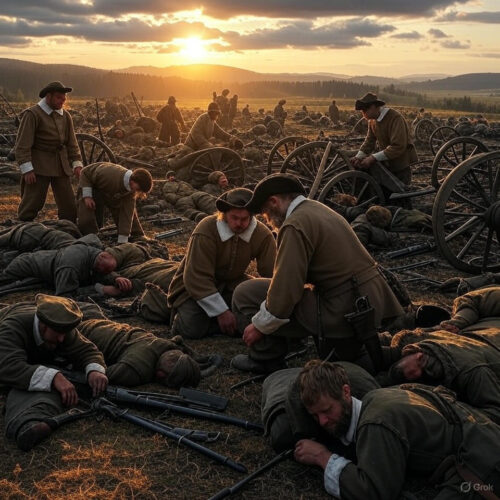
Expanding on the motivational thread, Wittstock teaches that true power stems from adaptability amid chaos. Banér’s aggression, tempered by Leslie’s caution, mirrors life’s need for balanced decision-making—passion without prudence leads to routs, as seen in Imperial hesitation. In modern terms, this applies to entrepreneurship: pivot markets like Swedes pivoted terrain, using data analytics as “scouts” to flank economic downturns.
Historical depth reveals more: The war’s religious veneer masked dynastic feuds; Habsburgs aimed for universal monarchy, Protestants for confessional parity. Sweden’s Lutheran zeal, fused with realpolitik, drove interventions—Gustavus viewed himself as God’s instrument, yet pragmatically allied with Catholic France. At Wittstock, this hybrid ethos shone: Protestant banners fluttered over Catholic foes, symbolizing ideological fluidity.
Tactical minutiae enrich the narrative. Swedish “Finnish” light cavalry, agile raiders, harassed Imperial flanks pre-battle, softening resolve. Musket volleys, fired in three ranks (rear reloading while front shot), outpaced enemy fire rates. Imperial arquebusiers, in deeper formations, struggled to maneuver in woods, their heavy tercios ill-suited to fluid engagements. Weather, though undocumented precisely, likely featured typical October chill—dampening powder, slicking slopes—amplifying the flank’s element of surprise.
Aftermath ripples extended socially. Victory propaganda, disseminated via pamphlets, rallied Protestant Europe; Swedish bards composed epics likening Banér to ancient heroes. Economically, captured guns reforged Swedish arsenals, while plunder—coined as “indemnities”—alleviated bankruptcy threats. Politically, it pressured Saxony toward neutrality, fracturing Imperial unity.
For personal application, envision daily “Wittstocks”: Facing a promotion block? Flank via side projects showcasing skills. Relationship strains? Detour through empathy-building exercises, emerging with renewed bonds. Health hurdles? Strategic “marches”—gradual habit changes—outpace direct assaults like fad diets.
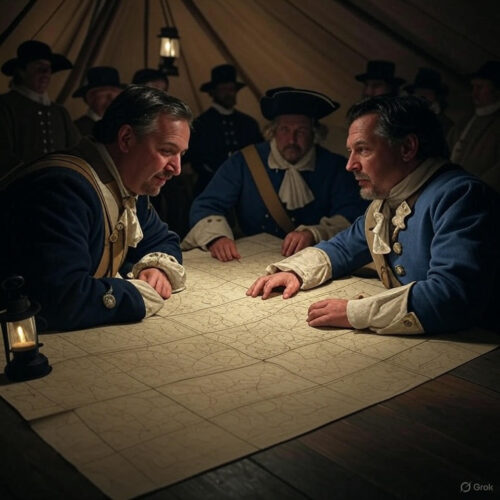
The war’s denouement contextualizes Wittstock’s endurance test. By 1648, exhaustion birthed Westphalia: 300+ treaties granting religious freedoms, weakening empires. Sweden’s role, amplified by Wittstock, secured territories fueling its “Age of Great Power.” Yet, the battle’s human cost—widows, orphans, scarred veterans—reminds of war’s shadows.
In motivational essence, Wittstock urges proactive defiance: Don’t charge headlong; scout, encircle, persist. Bullet-point benefits include enhanced problem-solving (terrain tactics for creative thinking) and leadership growth (command dynamics for self-mastery).
Plan extension: Integrate tech—apps for progress tracking, like Swedish ledgers. Monthly simulations: Role-play scenarios, refining responses. Long-term: Annual “victory reviews,” celebrating adaptations.
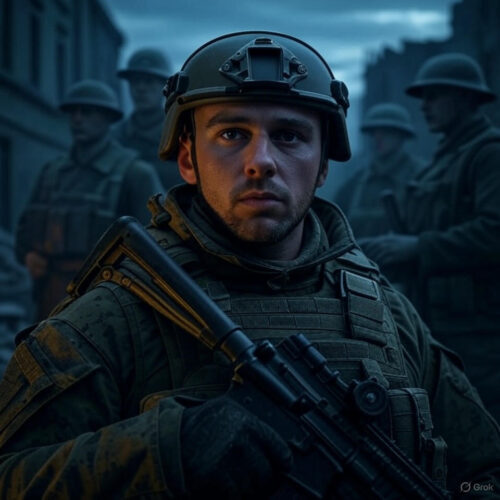
Ultimately, Wittstock’s saga— from Elbe crossings to hilltop routs—illuminates history’s lessons: Bold, informed action conquers adversity. By internalizing its strategies, individuals forge personal empires amid life’s tempests.

